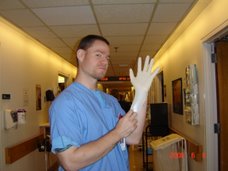
http://phstwlp1.partners.org:2075/gw1/ovidweb.cgi
INTRODUCTION
The proportional over-representation of males at higher levels of the British professional nursing hierarchy has been extensively documented and described (Dingwall 1972, 1977b, Austin 1977a, Carpenter 1977, Jones et al. 1981, Nuttall 1983, LeRoy 1986, Jolley 1989, Mackay 1989, Robinson 1992). Many previous explanations rely on a gender essentialist approach citing quasi-biological differences in career aspirations and pathways, career breaks taken by women after having children or part-time working, for example (Hardy 1983, Winston 1992, Adams 1994, Marsland et al. 1996).
Elsewhere (Ratcliffe 1996), I have posited an alternative theoretical framework within which a non-essentialist examination of gender differences in career progress may be made. This framework looks at processes within the professional nursing labour market which serve to maintain the gendered structure described above. The approach examines the labour market in nursing as a set of external labour markets within an overall national internal labour market. The nature of the labour market for the individual nurse is dependent on the ability to move geographically. Geographical mobility is considered to be a criterion of exclusion which, due to broader patriarchal social structures, conveys an aggregate advantage to males (who tend to be more geographically mobile) and a concomitant aggregate disadvantage to females.
Clearly, this notion requires adequate empirical investigation. For if it is the case that geographical mobility has significant collective gender effects on the labour market structure of nursing then it contributes a hitherto hidden form of 'structural' gender discrimination within the nursing labour market which needs to be exposed and subsequently dealt with by policy makers.
INTRODUCTION
The proportional over-representation of males at higher levels of the British professional nursing hierarchy has been extensively documented and described (Dingwall 1972, 1977b, Austin 1977a, Carpenter 1977, Jones et al. 1981, Nuttall 1983, LeRoy 1986, Jolley 1989, Mackay 1989, Robinson 1992). Many previous explanations rely on a gender essentialist approach citing quasi-biological differences in career aspirations and pathways, career breaks taken by women after having children or part-time working, for example (Hardy 1983, Winston 1992, Adams 1994, Marsland et al. 1996).
Elsewhere (Ratcliffe 1996), I have posited an alternative theoretical framework within which a non-essentialist examination of gender differences in career progress may be made. This framework looks at processes within the professional nursing labour market which serve to maintain the gendered structure described above. The approach examines the labour market in nursing as a set of external labour markets within an overall national internal labour market. The nature of the labour market for the individual nurse is dependent on the ability to move geographically. Geographical mobility is considered to be a criterion of exclusion which, due to broader patriarchal social structures, conveys an aggregate advantage to males (who tend to be more geographically mobile) and a concomitant aggregate disadvantage to females.
Clearly, this notion requires adequate empirical investigation. For if it is the case that geographical mobility has significant collective gender effects on the labour market structure of nursing then it contributes a hitherto hidden form of 'structural' gender discrimination within the nursing labour market which needs to be exposed and subsequently dealt with by policy makers.




No comments:
Post a Comment